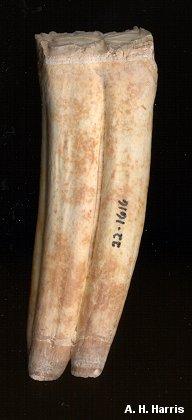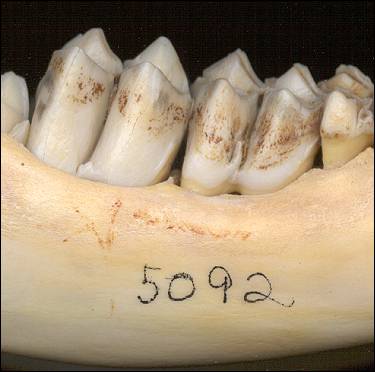

Gonna eat grass? Better grow some better teeth, because it's like feeding on sandpaper, thanks to grass blades manufacturing little structures made of silica—yes, silica, the same stuff that sand is made of. In the dry grasslands of the desert, we can add dirt to the outside of the grass, too, kicked up by the wind and animal hooves.
Then how do grazers cope? Well, teeth come in a variety of forms. The part covered by the hard enamel is called the crown. Animals that eat mostly soft foods have short crowns, and if they attempted to subsist on grass, would soon wear their teeth to the gums and starve to death. But grazers like horses have slowly emerging teeth with crowns several inches long. Their teeth eventually wear out, but only after they have produced their young. Other grazers, such as those mice known as voles, have teeth whose crowns keep growing as long as the animal lives.
Amazingly, evolution can make palatable even the eating of Nature's
version of sandpaper.

Listen to the Audio (mp3 format) as recorded by KTEP, Public Radio for the Southwest.
Contributor: Arthur H. Harris, Laboratory for Environmental Biology, Centennial Museum, University of Texas at El Paso.
Desert Diary is a joint production of the Centennial Museum and KTEP National Public Radio, University of Texas at El Paso.


Left: A lower cheek tooth from a fossil horse. This grazing animal was young, with the roots just beginning to form. The entire tooth is crown except for the darker brown at the base. Vertebrate Paleobiology Collection, Laboratory for Environmental Biology (LEB), 22-1616, Dry Cave, Eddy Co., NM. Right: The first and second lower molars of a young deer, a browser that feeds mainly on soft vegetation. The tooth above the "92" shows clearly the transition from crown (white) to the cream-colored dentine below; the tooth on the left is just emerging. Mammal Collection, LEB, 5092. Not to scale; the horse tooth is about as wide as the two complete deer teeth taken together.